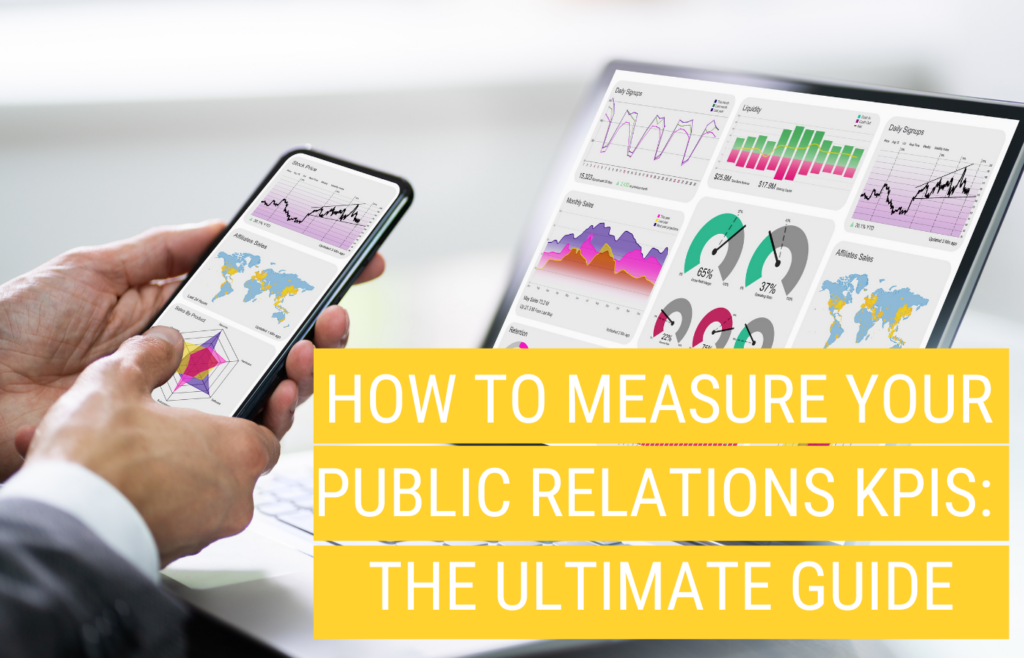Public Relations is an important factor in the success of any business. The ultimate goal of public relations is to create awareness of your brand and generate interest from the target market. Public Relations KPIs can help you measure your effectiveness when communicating with your audience and society at large. But what are KPIs? How do you calculate them? And how do you know which ones are the most important for your business? Keep reading to find out!
What are KPIs?
KPIs or Key Performance Indicators are used to measure a company’s performance. They focus on what your company does right and not on its problems. KPIs can help a company identify where it needs to improve and lead to more efficient decision-making by showing how a business is performing against its goals.
How to Calculate Them
Often, KPIs are calculated by looking at the number of tweets or shares. Take the number of tweets or shares and divide it by your follower count to get a ratio. For example, if you have 5,000 followers and 10,000 tweets about you on Twitter in a given period, that would be a 20% tweet ratio.
KPIs can also be calculated by measuring the number of times people see your business’s name across social media platforms. To do this, find out how many times your company name is mentioned on Twitter, Facebook, Instagram, and LinkedIn within a set time (say one day). For example:
* On Twitter: You mention your company’s name three times within one day.
* On Facebook: Your company’s name appears seven times in one day.
* On Instagram: Your company’s name appears four times in one day.
* On LinkedIn: Your company’s name appears two times in one day.
In this case, you might want to focus more on using LinkedIn as it has the least mentions than any other networks listed here.
The Importance of KPIs for Public Relations
What are KPIs?
KPIs stands for Key Performance Indicators. They are the key measurements that will help you analyze the success of your public relations strategy. Keep in mind that not all KPIs are created equally. Some measures might be more appropriate for your organization than others. For example, if you’re a design company, website traffic might be an important KPI because it tells you how many people visit your site. On the other hand, if you’re a restaurant, website traffic might not be as important a KPI for you because people can’t buy anything from your site.
How do I calculate my KPIs?
There are two ways to measure KPIs: qualitative and quantitative. Quantitative measures can tell you what is happening but not why or how to fix it, whereas qualitative measures can help identify areas of improvement but don’t provide as much actionable data.
To figure out what KPIs work best for your business, it’s a good idea to evaluate them first qualitatively and then quantitatively to see which ones provide the most insight into what is happening with your public relations strategy and its effectiveness.
Which KPIs Should I Monitor?
The answer to this question depends largely on the goals of your business. For example, if you want to emphasize social media, you might monitor engagement rates or shares. If you focus more on traditional media outlets, such as newspapers and magazines, your KPIs may be different.
Many different types of KPIs can help you measure your public relations efforts, including mentions in the press, press coverage, social media engagement rate and brand awareness. Take a look at these KPIs and choose whichever ones will best suit your company’s goals:
– Mentions in the Press
– Press Coverage
– Social Media Engagement Rate
– Brand Awareness
Having a set of public relations KPIs is crucial to assess your PR efforts and performance. It can help you measure your public relations KPIs, understand what’s working and what needs improvement, and help adapt your strategy accordingly.


